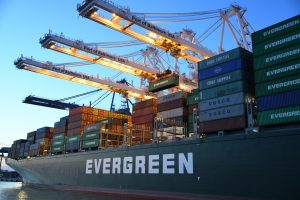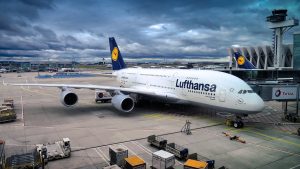How Is Coffee Transported To The UK? Well,Coffee is one of the most beloved beverages in the world, and the United Kingdom (UK) is no exception. With a growing coffee culture, it’s important to understand how coffee is transported to the UK to ensure a fresh and flavorful cup of joe reaches our mugs.
With a growing coffee culture, it’s important to understand how coffee is transported to the UK to ensure a fresh and flavorful cup of joe reaches our mugs.
In this article, we will delve into the intricacies of coffee transportation, exploring the journey from its origins to our local coffee shops. So, grab your favorite brew, sit back, and join us on this aromatic adventure!
Complete Guide :How Is Coffee Transported To The UK?
The Journey Begins: Coffee Origins
Before we dive into the transportation process, let’s first explore the origins of coffee. Coffee beans are predominantly grown in regions known as the “coffee belt,” which spans across countries such as Brazil, Colombia, Ethiopia, and Vietnam.
These regions provide the ideal climate and conditions for coffee plants to thrive, resulting in the production of high-quality coffee beans.
The Coffee Belt: A Haven for Coffee Plantations
The coffee belt is a band that encompasses the equator, providing coffee plants with the necessary conditions to flourish. The rich volcanic soils, ample rainfall, and consistent temperatures in this region create the perfect environment for coffee cultivation. As a result, countries within the coffee belt have become major players in the global coffee market.
Cultivation and Harvesting: From Bean to Cup
Coffee cultivation involves a meticulous process that begins with planting the coffee trees. After several years of growth, the trees bear fruit known as coffee cherries. These cherries house the coffee beans, which are carefully extracted through various methods such as picking or stripping.
The extracted beans then undergo a series of processes, including washing, drying, and milling, to remove any impurities and prepare them for transportation.
Customs and Documentation: Navigating Regulations
Importing coffee into the UK involves navigating through customs regulations and documentation procedures. Importers must comply with various requirements, including providing accurate descriptions of the coffee, ensuring proper labeling, and adhering to quality standards.
Additionally, customs duties and taxes may apply, which further add to the complexity of the import process.
How Is Coffee Transported To The UK?
Now that we have a basic understanding of coffee’s origins, let’s delve into the transportation methods employed to bring coffee to the UK. The journey from coffee plantations to coffee enthusiasts in the UK involves a combination of land, sea, and air transportation. Let’s explore each of these methods in detail.
1. Land Transportation: From Farms to Ports
After coffee beans are processed at the source, they are typically transported by trucks or trains to nearby ports. In countries with well-developed transportation infrastructure, such as Brazil, Colombia, and Vietnam, large quantities of coffee can be efficiently transported from the coffee farms to the port facilities.
In countries with well-developed transportation infrastructure, such as Brazil, Colombia, and Vietnam, large quantities of coffee can be efficiently transported from the coffee farms to the port facilities.
This initial leg of transportation is crucial in ensuring the coffee beans reach the ports in a timely manner.
2. Sea Transportation: Across Vast Oceans
Once the coffee beans arrive at the ports, they are loaded onto cargo ships for the long journey across the seas.  Shipping plays a vital role in the global coffee trade, with large container vessels carrying tons of coffee beans from coffee-producing countries to various destinations, including the UK.
Shipping plays a vital role in the global coffee trade, with large container vessels carrying tons of coffee beans from coffee-producing countries to various destinations, including the UK.
These ships are equipped with temperature-controlled containers to preserve the quality and freshness of the coffee during transit.
3. Air Transportation: Swift Delivery for Specialty Coffees
While sea transportation is the primary mode for coffee shipments, air transportation is often utilized for specialty coffees or time-sensitive deliveries.  Specialty coffees, known for their unique flavors and high quality, are transported by air to ensure their freshness is maintained.
Specialty coffees, known for their unique flavors and high quality, are transported by air to ensure their freshness is maintained.
This method allows for faster delivery, ensuring that specialty coffees reach the UK market promptly.
Distribution Within the UK
Once the coffee containers have successfully cleared customs, they are transported to distribution centers within the UK. From these centers, coffee is further distributed to various destinations, including cafes, restaurants, supermarkets, and specialty stores.
The efficient distribution network ensures that coffee is readily available to consumers throughout the country.
Warehousing and Storage: Maintaining Quality
To maintain the quality and freshness of coffee, proper warehousing and storage facilities are essential. Temperature and humidity-controlled warehouses are used to store coffee beans, protecting them from moisture, pests, and other potential sources of damage.
Strict inventory management practices are employed to ensure the rotation of stock and prevent any degradation in quality.
Retail and Consumer Access
Coffee lovers in the UK can easily access their favorite brews through various retail channels. From local coffee shops to large supermarket chains, an extensive range of coffee products are available to cater to different tastes and preferences.
Whether it’s whole bean coffee, ground coffee, or ready-to-drink options, consumers can find their desired coffee conveniently.
The Sustainable Coffee Movement
The transportation of coffee to the UK also encompasses the growing focus on sustainability within the coffee industry. Many coffee producers and importers are adopting sustainable practices, such as fair trade certifications, organic farming methods, and supporting environmentally friendly initiatives.
These efforts aim to minimize the environmental impact of coffee transportation and promote social responsibility within the supply chain.
Challenges and Solutions in Coffee Transportation
The journey of coffee from its origin to the UK is not without its challenges. Factors such as weather conditions, logistics complexities, and geopolitical situations can disrupt the transportation process.
However, advancements in logistics technology, improved infrastructure, and collaborative efforts among stakeholders have helped mitigate these challenges and ensure a steady supply of coffee to the UK.
How Is Coffee Transported To The UK? FAQs
Now that we’ve covered the transportation process of coffee, let’s address some frequently asked questions regarding the journey of coffee beans to the UK.
1: How long does it take for coffee to be transported to the UK?
The duration of coffee transportation to the UK varies depending on several factors, including the origin of the coffee, transportation mode, and shipping routes. On average, it can take anywhere from a few weeks to a couple of months for coffee to reach the UK.
2: Are there any environmental concerns associated with coffee transportation?
Coffee transportation, particularly by sea, can contribute to carbon emissions and environmental impacts. However, efforts are being made within the coffee industry to reduce the carbon footprint of transportation through initiatives like carbon-neutral shipping and sustainable packaging.
3: Are there any regulations or quality standards for coffee transportation?
Yes, the transportation of coffee is subject to various regulations and quality standards. International organizations, such as the International Coffee Organization (ICO) and the Specialty Coffee Association (SCA), have established guidelines to ensure the quality and integrity of coffee during transportation.
4: What measures are taken to preserve the freshness of coffee during transportation?
To preserve the freshness of coffee during transportation, specialized containers with controlled temperature and humidity levels are used.
Additionally, coffee beans are often packaged in airtight bags with one-way valves that allow the release of carbon dioxide while preventing oxygen from entering.
5: Can transportation affect the flavor of coffee?
Yes, transportation conditions can impact the flavor of coffee. Prolonged exposure to extreme temperatures, moisture, or improper handling can lead to flavor degradation. Therefore, maintaining optimal transportation conditions is essential to ensure the coffee’s quality and taste are preserved.
6: How can I support sustainable coffee transportation practices?
You can support sustainable coffee transportation practices by opting for coffee brands that prioritize environmentally friendly shipping methods, such as carbon-neutral shipping.
Additionally, choosing coffees with certifications like Fairtrade or Rainforest Alliance ensures that ethical and sustainable practices are followed throughout the supply chain, including transportation.
Conclusion
The journey of coffee from its origins to the UK involves a complex web of transportation methods, ensuring that coffee enthusiasts can enjoy their favorite brew.
From land transportation to sea voyages and occasional air shipments, coffee travels thousands of miles to reach our local coffee shops.
By understanding the transportation process, we can appreciate the efforts and expertise involved in delivering a fresh and flavorful cup of coffee to our mugs. So, the next time you savor that delightful sip of coffee, remember the extensive journey it undertook to reach your UK coffee shop.
Recent Posts
Benin Coup Bombshell Soldiers Announce Seizure Of Power On National TV
On 7 December 2025, soldiers in Benin appeared live on national television and announced that they had seized power from the country’s elected government. The announcement shocked the nation and...
Snowfall patterns across the United States vary wildly, with northern regions regularly blanketed in white while southern states often go years without a single flake. Because of this variability,...